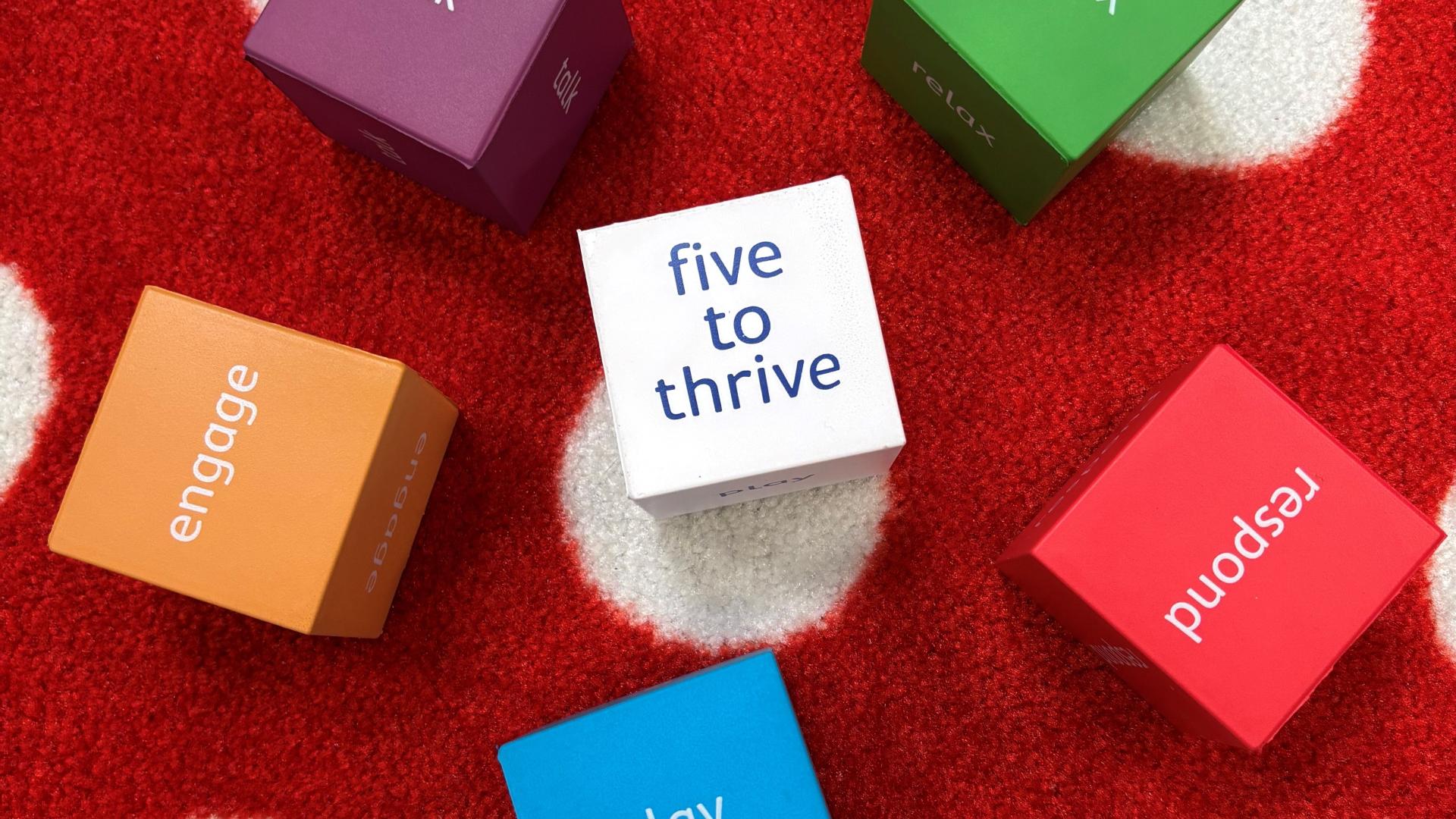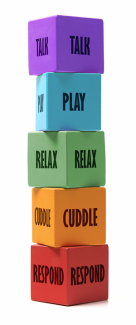
Five to Thrive was developed to support children’s emotional development, particularly those who have experienced early trauma or attachment disruptions. However, its core principles can also be used to support mental health in children and adults alike.
Five to Thrive encourages secure attachments between caregivers and children to ensure positive brain development to support a child’s emotional resilience and communication skills.
It's demonstrated in a tower of building blocks and gives ideas on how parents and caregivers can be responsive to their children through five key principles (the blocks) - respond, cuddle, relax, play and talk

These are everyday connections between two people, when used consistently, promote brain development, emotional resilience, and mental wellbeing.
You can find more information about Five to Thrive here but lets look at each block in relation to mental health
Respond- Being attuned and responsive to others’ emotional and physical needs
- Mental health impact:
- Builds trust and emotional safety.
- Reinforces the idea that needs are valid and will be met, which is essential for self-esteem.
- Helps regulate stress and anxiety through co-regulation.
Example: A teacher notices a child withdrawing during group work and gently checks in. The child feels seen and valued.
Engage - Making eye contact, showing interest, sharing attention and affection.
- Mental health impact:
- Supports social connection and reduces feelings of isolation.
- Boosts dopamine and oxytocin, improving mood and connection.
- Encourages self-expression and builds confidence.
Example: A parent sits with their child during homework, offering encouragement and shared focus.
Relax - Creating moments of calm, rest, and emotional regulation.
- Mental health impact:
- Reduces cortisol (stress hormone) levels.
- Helps develop self-soothing skills and emotional regulation.
- Allows space for processing emotions and reducing overwhelm.
Example: A trusted person helps a child learn breathing exercises or creates a quiet, sensory-friendly space.
Play - Engaging in spontaneous, creative, and joyful activities.
- Mental health impact:
- Encourages emotional expression and problem-solving.
- Boosts resilience and coping skills.
- Strengthens relationships through shared joy and fun.
Example: A therapist uses play-based interventions to help a child explore feelings in a safe way.
Talk - Using language to name feelings, needs, and experiences.
- Mental health impact:
- Builds emotional literacy—a key protective factor for mental health.
- Encourages communication over behavior, reducing misinterpretation.
- Helps process difficult events through storytelling and narrative.
Example: A youth worker supports a teen in naming their feelings after a conflict with a friend, helping them make sense of their reactions.